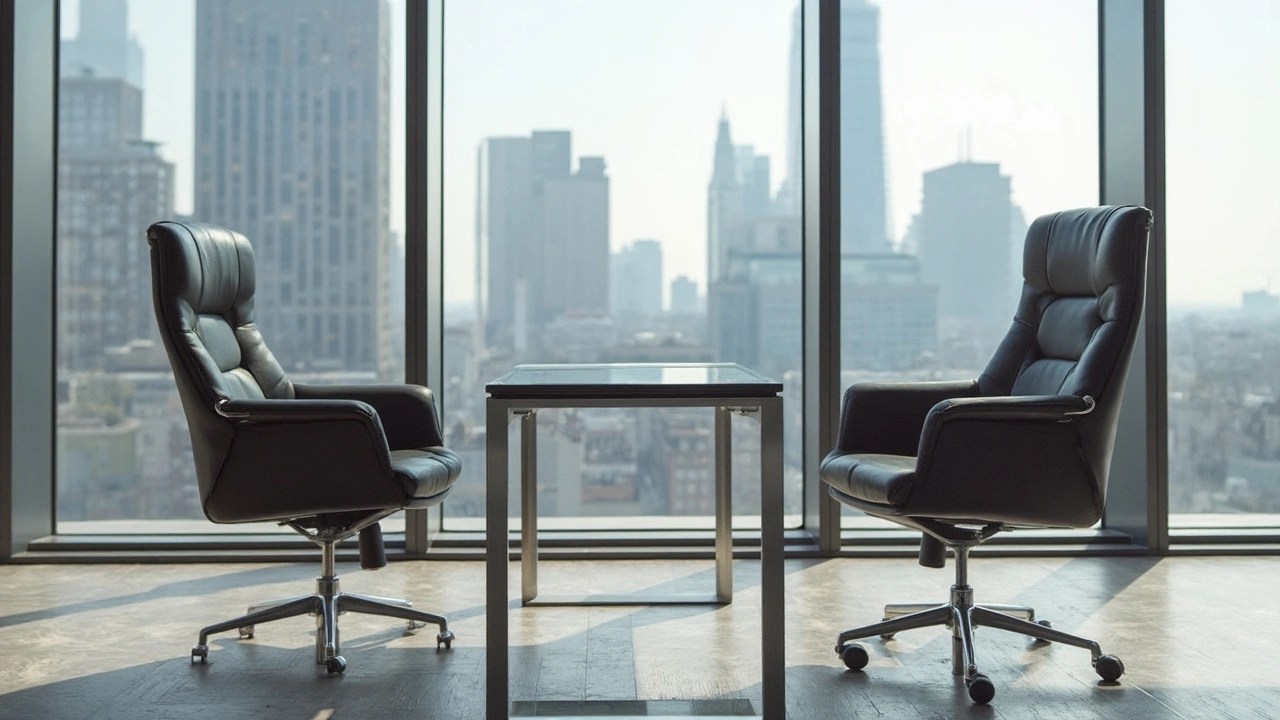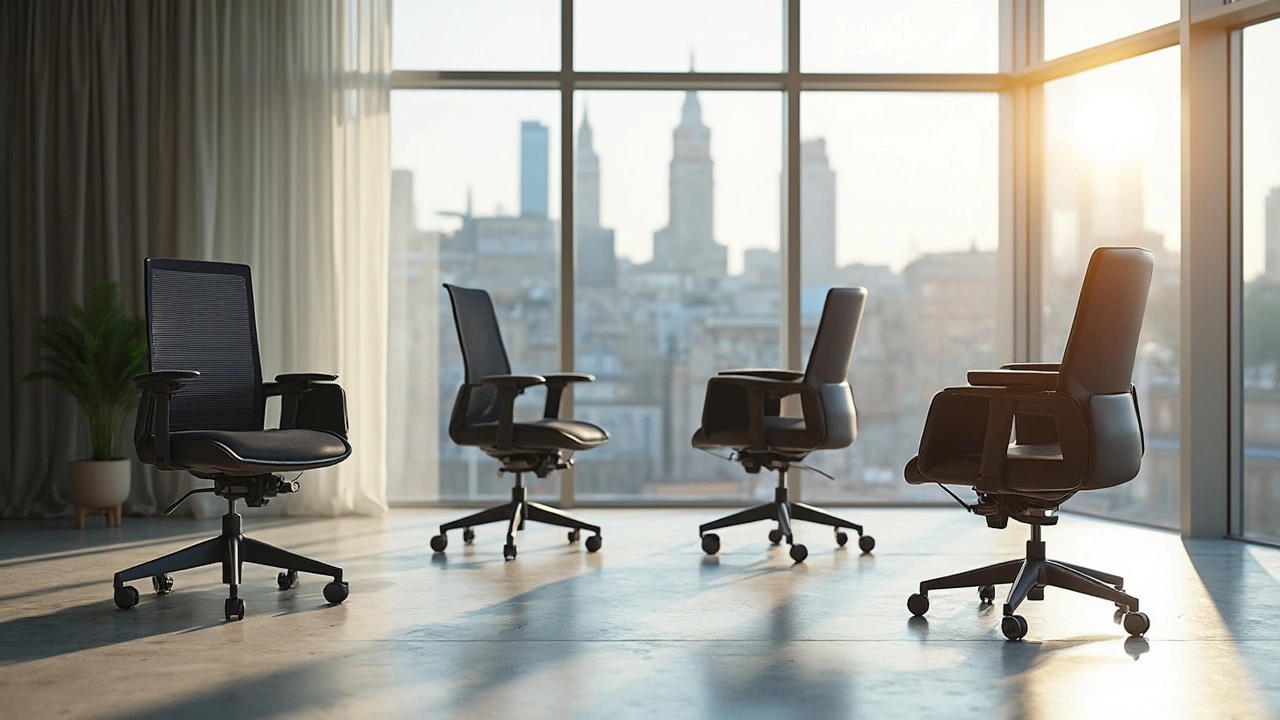Office Chair Guides: Picks, Alternatives & Comfort Tips
If you spend hours at a desk, the right chair can make or break your day. A good office chair keeps your back straight, your feet flat, and your mind focused. Below you’ll find straightforward advice on picking a chair that fits your body, budget, and style, plus a few creative options if you want to ditch the traditional swivel.
Choosing the Right Office Chair
First, think about adjustability. Look for a seat height that lets your knees form a 90‑degree angle and arms that stay close to your body when you type. A lumbar pad that slides up and down adds support where your lower back needs it most.
Material matters too. Mesh backs stay cool in summer, while padded leather feels luxurious but can trap heat. For a long‑lasting seat, choose a chair with a sturdy steel or aluminum base and a five‑star sturdy casters set.
Don’t forget weight capacity. If you’re heavier than average, a chair rated for at least 250 lb will hold up better over time. Same goes for chairs meant for tall users—look for seat depth that can be moved back enough to support longer thighs.
Price doesn’t always equal quality, but it’s a good signal. Mid‑range chairs (around £150‑£300) often balance comfort and durability. If you can stretch the budget, a high‑end ergonomic model adds features like auto‑tilt and memory foam cushions.
Finally, test before you buy. Sit for at least five minutes, swivel, lean back, and push the armrests up and down. If anything feels off, keep looking – the perfect chair should feel like an extension of your body, not a piece of furniture you have to fight with.
Creative Alternatives to Traditional Office Chairs
Not a fan of the classic swivel? You’re not alone. The post “Best Alternatives to an Office Chair” highlights a few fun options that keep you active while you work.
A yoga ball lets you roll gently, which can improve core strength and posture. Just make sure the ball is the right size – your knees should be at hip level when you sit.
Standing desks are another popular pick. They let you switch between sitting and standing throughout the day. Pair a simple stool or a height‑adjustable bench for moments when you need a break from full‑time standing.
Kneeling chairs shift the weight to your shins, opening up the hips and encouraging an upright spine. They’re great for short bursts of work but might feel uncomfortable if you sit for hours straight.
If you love a bit of movement, try a balance board under a regular chair. It adds subtle instability that forces you to engage core muscles without sacrificing the familiar seat.
Whatever alternative you choose, keep the same ergonomic principles in mind: proper height, support for lower back, and a stable base. Mix and match – you might use a ball for brainstorming, a standing desk for emails, and a regular chair for deep focus sessions.
Taking care of your chair (or any alternative) extends its life. Wipe down mesh or leather weekly, tighten bolts once a month, and replace worn casters to keep rolling smoothly.
In short, the best office chair is the one that supports you, fits your space, and makes you feel good enough to stay productive. Experiment with a few options, listen to your body, and you’ll find the perfect seat for every workday.
Best Office Chair for All-Day Sitting: What Actually Works?
Sitting for hours at a desk can ruin your back if you don’t have the right chair. This article cuts through the hype to explain which office chair features are actually worth your money. Get real advice on how to pick a chair that keeps you comfortable and focused all day. Learn which mistakes to avoid and what to look for if you care about your health (and your productivity). The right chair isn’t just a luxury—it’s a real game changer.
MoreBest Office Chair for Work: What Really Matters?
Picking the right office chair isn't just about looks—it's the secret sauce for getting stuff done and not wrecking your back. This article breaks down what types of chairs actually help with comfort, health, and focus when you're at your desk for hours. You'll learn about features that matter most, watch out for sneaky deal-breakers, and get real tips for choosing a chair that fits your body and your workflow. Forget confusing jargon—just straightforward advice so you can work better and feel good doing it. No fluff, just facts and helpful tips.
MoreHow to Choose an Office Chair for Long Hours Without Regret
Spending hours at your desk can mess with your back, neck, and even your mood. This article shows you exactly what to look for in an office chair if you work long hours, so you don't regret your choice later. Get real tips on comfort, ergonomics, and features that actually make a difference. Learn how to spot clever marketing from truly helpful design. Walk away knowing how to pick a chair that keeps you comfortable and productive.
MoreOffice Chair Dilemma: To Arm or Not to Arm?
Choosing the right office chair can make a big difference in your daily comfort and posture. Some people swear by chairs with arms for added support, while others find armless designs offer more flexibility and mobility. This article explores the pros and cons of each option, examining factors like style, budget, and ergonomics to determine what's best for your workspace.
MoreBest Chair to Prevent Slouching: Find Your Perfect Posture
If you're tired of slouching in your office chair, it's time to find one that promotes proper posture. A good chair should support your back, encourage a natural sitting position, and prevent fatigue. We'll explore features to look for in a chair, some popular options on the market, and tips on sitting correctly. Get ready to transform your workday by making a simple yet effective change.
MoreWhy Choose a Gaming Chair Over an Office Chair
Gaming chairs might look like something out of a sci-fi movie, but they're designed with comfort and ergonomics in mind, addressing common issues faced by office chairs. While both options aim to provide support during long hours of work or play, gaming chairs offer personalized adjustments and striking designs. They're not just for gamers; anyone spending a long time seated could benefit. Exploring the differences reveals how gaming chairs can alleviate common discomforts experienced with standard office seating.
More





